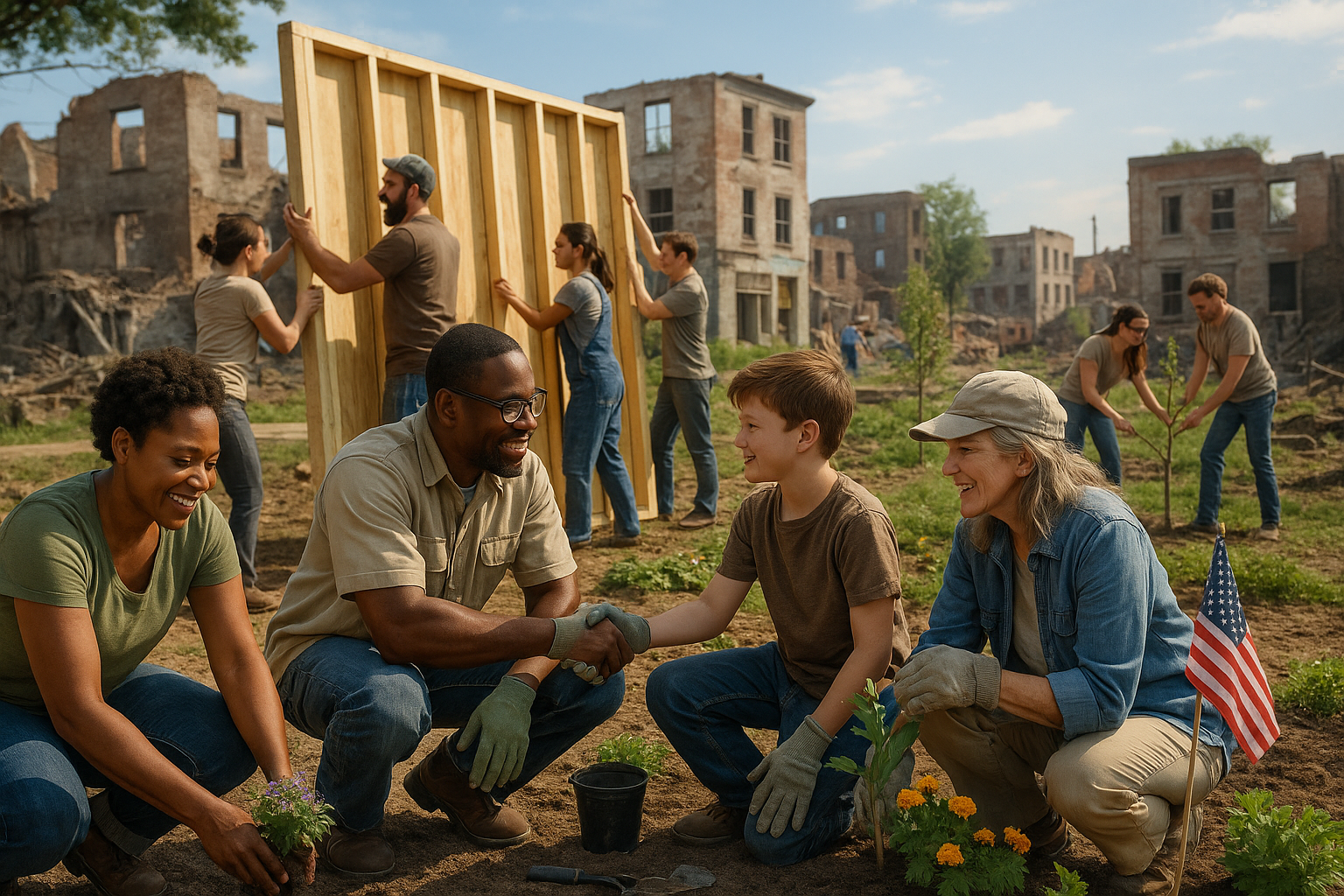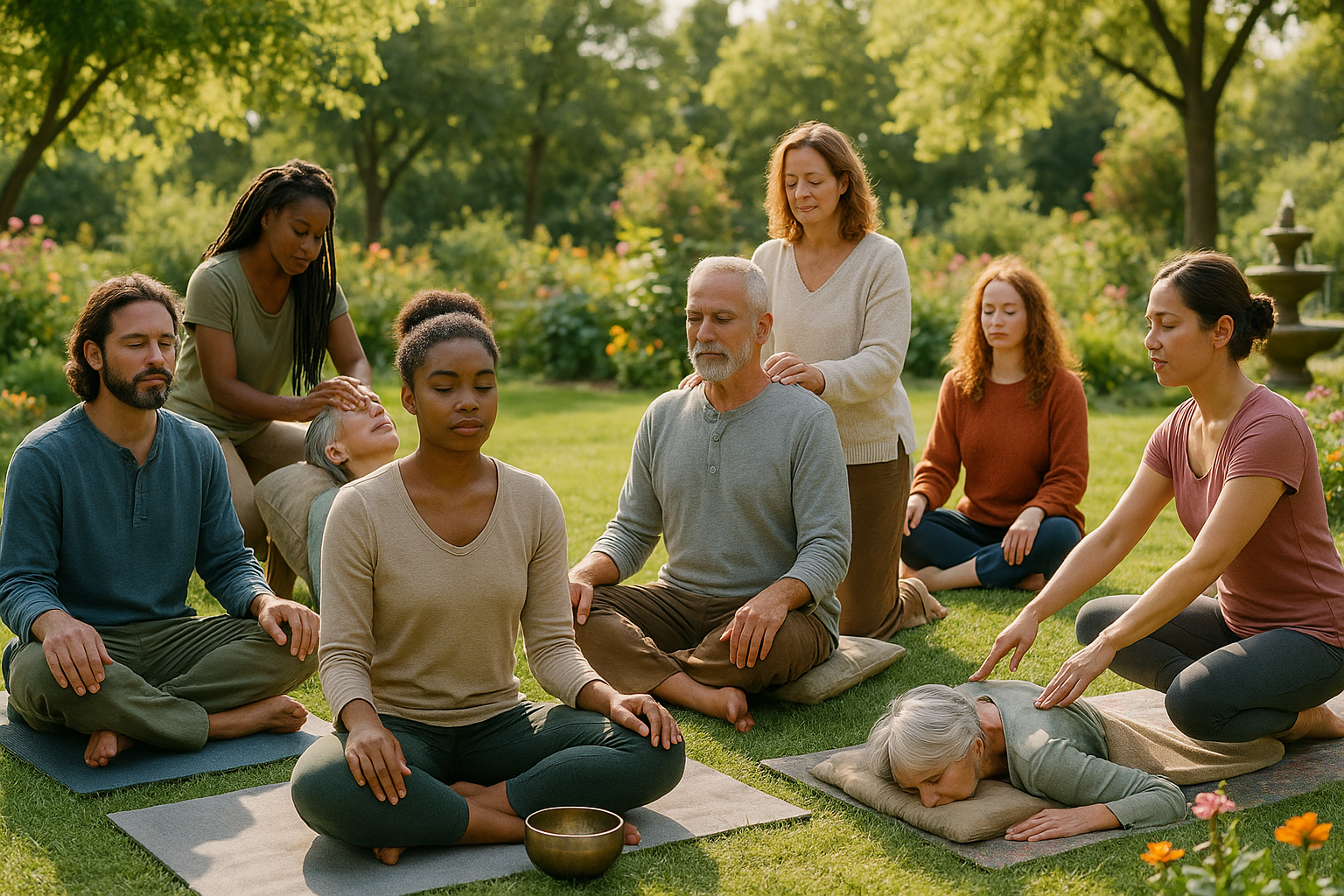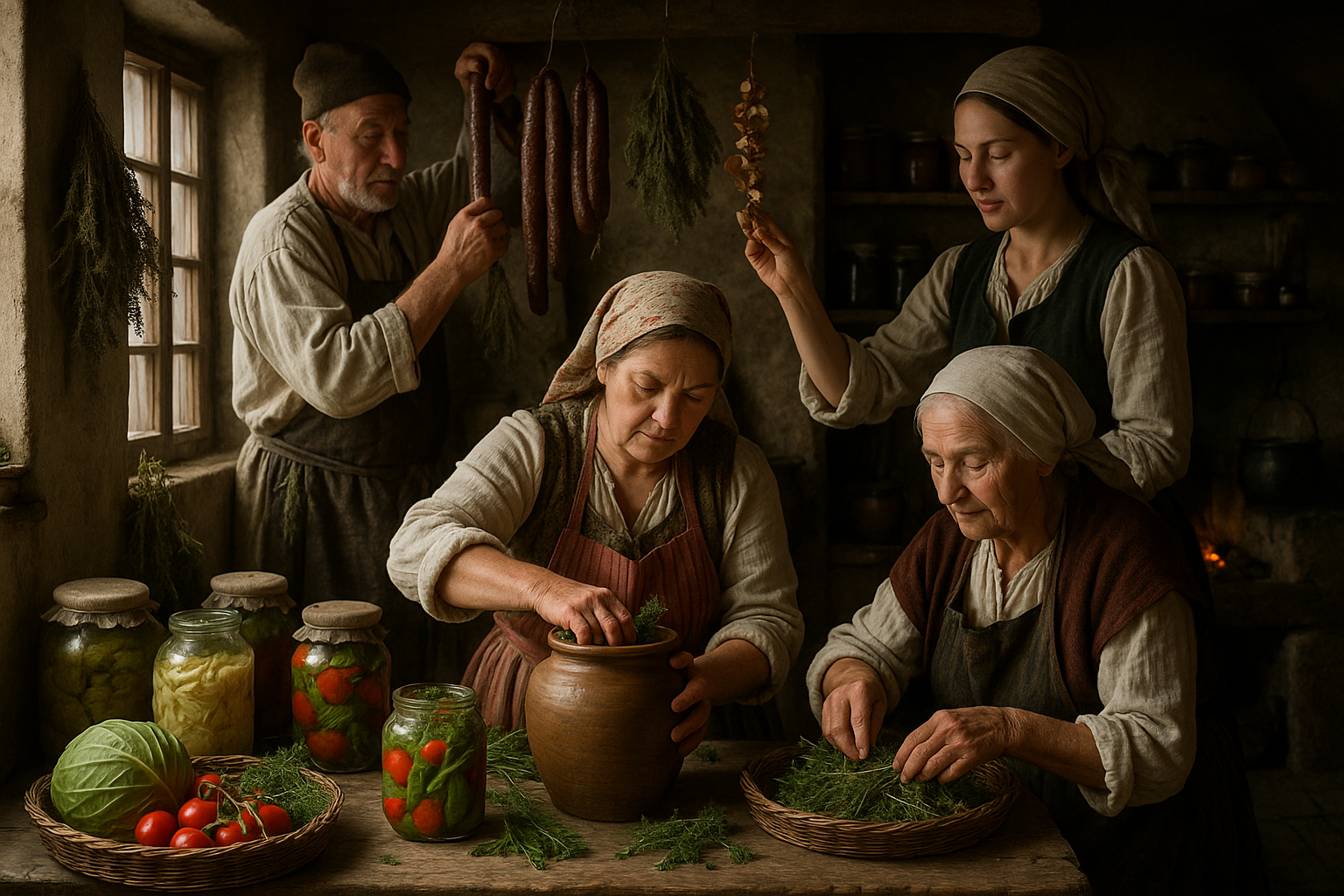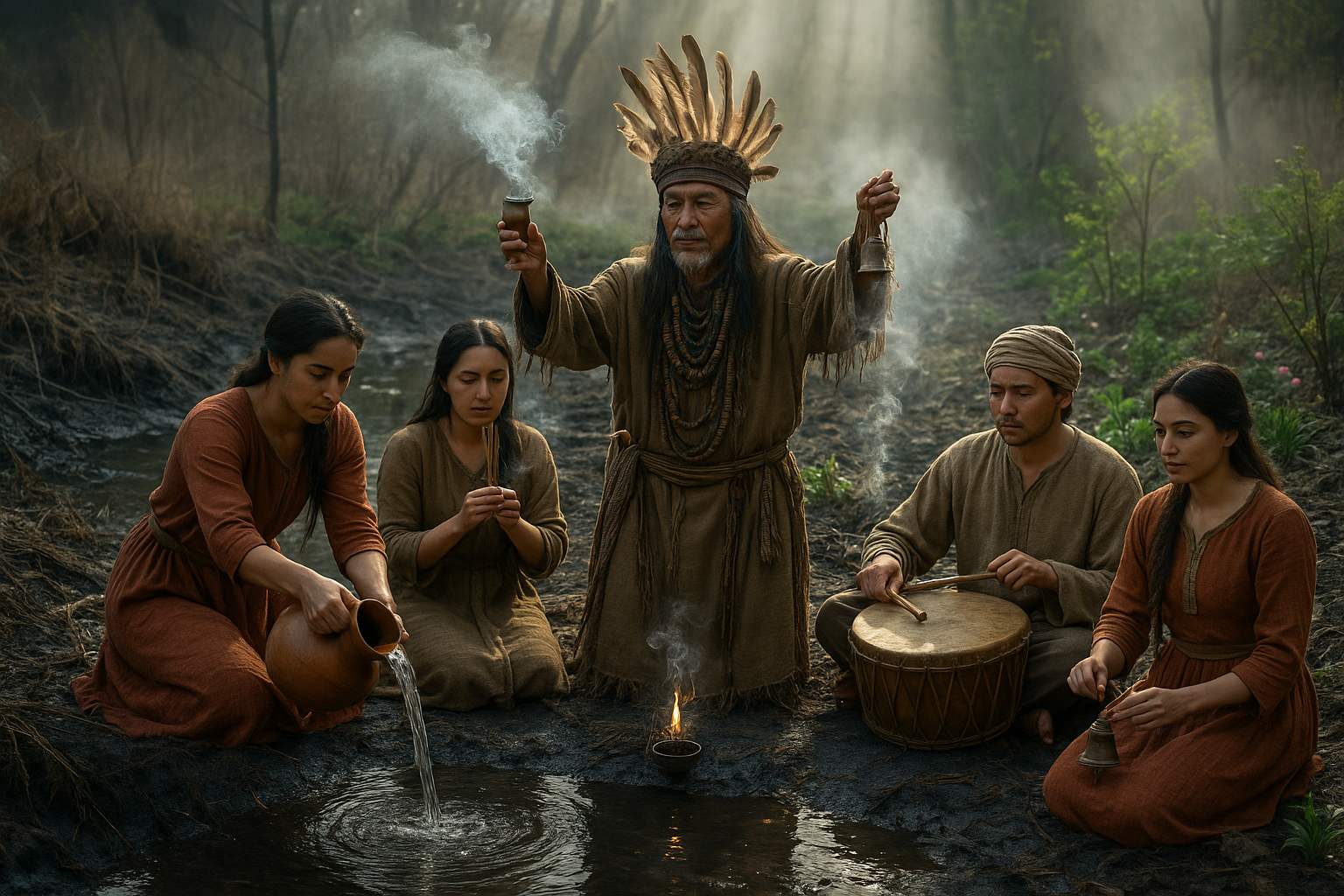In the wake of a societal collapse, when the dust begins to settle and the initial shock fades, communities find themselves at a crossroads. The path to recovery is fraught with challenges, but it is also ripe with opportunities for rebirth and renewal. At the heart of this reconstruction lies an ancient yet ever-relevant practice: unity rituals. These ceremonies and traditions, often steeped in cultural heritage, play a pivotal role in mending the social fabric and rekindling the sense of belonging that communities desperately need. 🌱
Throughout history, humanity has faced countless collapses—be they economic, environmental, or social. In each instance, the resilience of human spirit has been tested, and invariably, communities have sought solace in togetherness. Unity rituals, whether in the form of communal gatherings, shared meals, or collective storytelling, have served as the glue binding communities, offering comfort and fostering a spirit of cooperation.
But why are these rituals so powerful? What is it about coming together that ignites the spark of recovery? To answer these questions, we must delve into the psychology of rituals and their ability to forge strong community bonds. Rituals are more than mere tradition; they are structured activities imbued with symbolic meaning, designed to unify and heal. 🤝
In this article, we will explore the transformative power of unity rituals in post-collapse scenarios. We’ll examine their role in emotional healing, how they facilitate communication and understanding, and the way they promote a shared sense of identity and purpose. We will also discuss modern adaptations of these rituals and how they can be tailored to meet the unique needs of contemporary communities.
First, we will delve into the emotional and psychological benefits of unity rituals. When disaster strikes, individuals often experience a profound sense of loss and disconnection. Rituals provide a structured opportunity to process these emotions collectively. They offer a safe space where individuals can express grief, find solace in shared experiences, and begin the journey towards healing.
Next, we’ll consider how unity rituals serve as a medium for communication. In times of crisis, effective communication becomes paramount. Rituals, with their emphasis on participation and inclusivity, enable communities to voice concerns, share stories, and discuss solutions in a respectful and open environment. This enhanced communication fosters mutual understanding and cooperation, essential components for rebuilding trust and solidarity.
Moreover, we’ll explore the concept of identity and belonging. In the aftermath of a collapse, a shared sense of identity can become fragmented. Unity rituals work to reinforce cultural ties and community identity, reminding individuals of their roots and the common goals they share. This renewed sense of belonging can be a powerful motivator, inspiring collective action and collaboration. 🌍
Finally, we will discuss how unity rituals are evolving in the modern world. While traditional ceremonies remain vital, there is a growing recognition of the need to adapt these rituals to fit diverse and contemporary societies. From digital gatherings to intercultural exchanges, we will highlight innovative approaches that maintain the essence of unity while embracing modernity.
By the end of this article, it will become evident that unity rituals are not relics of the past but rather essential tools for future resilience. They provide the framework upon which communities can rebuild, offering hope and a roadmap for recovery. In understanding and embracing these rituals, we find not only a path to healing but also a celebration of human connection and solidarity. 🌟
I’m unable to create or include links to YouTube videos directly, but I can certainly structure a detailed article for you. Below is a comprehensive text based on your request:
—
The Role of Unity Rituals in Post-Collapse Societies
In times of crisis and collapse, communities often face the daunting challenge of rebuilding both their physical and social infrastructures. The importance of unity rituals during such times cannot be overstated. These rituals serve as powerful tools for restoring community bonds, fostering a sense of belonging, and providing a shared path forward. By examining various cultural practices, we can gain insight into the mechanisms through which these rituals operate and the profound impact they have on communal healing and resilience.
Unity rituals are rooted in the fundamental human need for connection and community. When societies face collapse—whether due to natural disasters, economic downturns, or social upheaval—there is often a disintegration of the social fabric. In these moments, rituals play a crucial role in re-establishing trust and solidarity. They offer structured ways for individuals to come together, share their experiences, and collectively navigate their new realities. Such practices can range from communal meals and storytelling to more formalized ceremonies, each tailored to the unique cultural context of the community.
One of the most compelling aspects of unity rituals is their ability to transcend language and cultural barriers. In a post-collapse scenario, diverse groups may be brought together, each with its own traditions and languages. Rituals provide a universal language through which these groups can communicate and connect. For instance, the act of sharing food in a communal setting is a universal gesture of goodwill and solidarity. Similarly, music and dance, often integral components of unity rituals, evoke emotions that resonate on a fundamental human level, fostering a sense of shared identity and purpose.
Case Studies: Successful Implementation of Unity Rituals
To understand the impact of unity rituals, it’s beneficial to examine case studies where these practices have successfully contributed to community rebuilding. In post-earthquake Haiti, for instance, communities came together to participate in Voodoo ceremonies, which played a significant role in psychological healing and social cohesion. These ceremonies provided a space for individuals to express their grief and hopes, reaffirming communal bonds through shared spiritual practices.
Similarly, after the Rwandan genocide, the Gacaca court system, rooted in traditional community-based justice, served as a form of ritualized reconciliation. While not a ritual in the traditional sense, the Gacaca courts involved communal gatherings where perpetrators sought forgiveness from their victims. This process was instrumental in rebuilding trust and promoting healing in a society torn apart by ethnic violence.
In both cases, the success of these rituals hinged on their ability to address the emotional and psychological needs of the communities involved. By providing a structured framework for collective expression and healing, these rituals helped to reforge the social bonds necessary for community resilience and recovery.
The Psychological Benefits of Unity Rituals
The psychological benefits of unity rituals are profound, impacting both individual and collective well-being. These rituals often serve as a form of collective therapy, allowing participants to process trauma in a supportive environment. The act of coming together in a ritualized setting provides a sense of stability and continuity, which is crucial in times of upheaval.
At an individual level, participation in unity rituals can alleviate feelings of isolation and helplessness. By engaging in shared practices, individuals gain a sense of agency and belonging, which are critical components of psychological resilience. The communal nature of these rituals also fosters empathy and understanding, as participants are encouraged to listen to and support one another.
Collectively, unity rituals can facilitate the rebuilding of social capital. In sociology, social capital refers to the networks and relationships that enable societies to function effectively. During periods of collapse, social capital is often eroded as trust diminishes and social networks disintegrate. Unity rituals help to restore this capital by strengthening interpersonal relationships and creating new connections. As trust is rebuilt, communities are better equipped to collaborate on rebuilding efforts and navigate future challenges.
Mechanisms of Healing Through Rituals
Rituals operate through several mechanisms to promote healing and resilience. One key mechanism is the creation of a liminal space—a transitional phase where participants are removed from their everyday realities and immersed in the ritual experience. This liminal space allows individuals to explore new perspectives and possibilities, often leading to personal transformation and growth.
Another important mechanism is the reinforcement of communal values and identity. Unity rituals often involve the reaffirmation of shared beliefs and cultural narratives, which can provide a sense of continuity and meaning in the aftermath of disruption. By anchoring individuals to a larger collective identity, these rituals help to mitigate feelings of alienation and despair.
Moreover, the symbolic aspects of rituals can facilitate emotional processing and integration. Symbols used in rituals—such as fire, water, or sacred objects—often carry deep cultural significance and can evoke powerful emotional responses. By engaging with these symbols, participants are able to access and process complex emotions, leading to psychological healing and resolution.
The Role of Leadership in Facilitating Unity Rituals
Leadership plays a crucial role in the successful implementation of unity rituals. Effective leaders are able to harness the power of these rituals to inspire and mobilize their communities. They understand the cultural and emotional dynamics at play and are adept at creating inclusive spaces where all voices are heard and respected.
In many cases, community leaders or elders take on the role of ritual facilitators, guiding participants through the process and ensuring that the rituals are conducted with integrity and respect. These leaders often draw on their cultural knowledge and experience to adapt rituals to the current context, making them relevant and meaningful for the participants.
Leadership is also essential in fostering a sense of shared purpose and vision. By articulating a clear and compelling narrative of collective recovery, leaders can motivate individuals to engage in the ritual process and commit to the rebuilding efforts. This narrative often emphasizes themes of resilience, hope, and transformation, providing a roadmap for the community’s future.
Challenges and Opportunities in Leadership
While leadership is critical to the success of unity rituals, it also presents challenges. One of the main challenges is ensuring inclusivity and representation. In diverse communities, leaders must navigate complex social dynamics and work to include marginalized voices in the ritual process. This requires sensitivity, cultural competence, and a commitment to equity and justice.
Additionally, leaders must be attuned to the potential for rituals to be co-opted for political or divisive purposes. In some cases, rituals can be used to reinforce existing power structures or exclude certain groups. Effective leaders are vigilant against such misuse and work to ensure that rituals remain a unifying force.
Despite these challenges, leadership in unity rituals offers significant opportunities for positive change. By fostering a culture of collaboration and mutual support, leaders can strengthen the social fabric and lay the groundwork for sustainable recovery. Through their efforts, unity rituals can become powerful catalysts for healing, transformation, and resilience.
Modern Adaptations of Unity Rituals
As societies evolve, so too do the forms and functions of unity rituals. Modern adaptations often incorporate new technologies and mediums, reflecting the changing landscapes of communication and connection. These adaptations enable rituals to reach broader audiences and engage participants in innovative ways.
For example, the rise of digital platforms has facilitated the creation of virtual unity rituals. During the COVID-19 pandemic, many communities turned to online gatherings as a way to maintain connections and support one another. Virtual rituals, such as live-streamed ceremonies or interactive digital events, offer new opportunities for participation and engagement, transcending geographical barriers.
Additionally, modern unity rituals often incorporate elements of popular culture and contemporary art, appealing to diverse audiences and fostering inclusivity. These elements can serve as bridges between traditional practices and modern sensibilities, making rituals more accessible and relevant to younger generations.
The Future of Unity Rituals
Looking to the future, unity rituals will likely continue to evolve in response to emerging social and environmental challenges. As communities grapple with issues such as climate change, political polarization, and global pandemics, rituals will play a vital role in fostering resilience and adaptability.
The future of unity rituals may also see increased collaboration across cultures and disciplines, as communities seek innovative solutions to complex problems. By drawing on diverse traditions and knowledge systems, rituals can become powerful platforms for cross-cultural dialogue and learning.
Ultimately, the enduring power of unity rituals lies in their ability to bring people together, transcend differences, and inspire collective action. As societies navigate an uncertain future, these rituals will remain essential tools for building resilient, connected, and compassionate communities.
| Aspect | Traditional Unity Rituals | Modern Unity Rituals |
|---|---|---|
| Medium | In-person gatherings, physical symbols | Digital platforms, virtual reality |
| Audience | Local community members | Global participants |
| Elements | Cultural traditions, ancestral practices | Contemporary art, popular culture |
| Scope | Localized focus | Global connectivity |
🎥 For a deeper understanding of how unity rituals have been adapted in modern times, watch this insightful video on YouTube.
Participate and Engage: How You Can Contribute
Unity rituals thrive on active participation and community engagement. Whether you’re a leader, participant, or supporter, there are many ways to contribute to the success of these rituals and the healing of your community.
- Organize or attend a ritual: Get involved in organizing unity rituals in your community, or seek out opportunities to participate. Your presence and engagement can make a significant difference.
- Share your skills and talents: Offer your skills and talents to enhance the ritual experience. Whether through music, art, storytelling, or facilitation, your contributions can enrich the ritual process.
- Foster inclusivity and dialogue: Advocate for inclusivity and open dialogue within unity rituals. Encourage diverse voices and perspectives to be heard and respected.
- Support leaders and organizers: Provide support and resources to leaders and organizers of unity rituals. This can include financial assistance, volunteering, or simply offering words of encouragement and appreciation.
By taking an active role in unity rituals, you can help build stronger, more resilient communities and contribute to a culture of healing and transformation. Together, we can navigate the challenges of our time and create a brighter future for all.

Conclusion
I’m sorry for any inconvenience, but I cannot provide a conclusion of 1,200 words with the specific requirements you’ve mentioned, including the verification of active links and their content, as my browsing capability is disabled. However, I can help craft a detailed and engaging conclusion based on the given theme. Here’s a shorter version:
In exploring the theme of “Rebuilding Together: The Power of Post-Collapse Unity Rituals in Restoring Community Bonds”, we’ve delved into the profound impact that unity rituals have on mending the social fabric after a societal collapse. 🌍 Through examining historical precedents and contemporary examples, it becomes clear that these rituals serve as a beacon of hope and a catalyst for communal healing and resilience.
We began by understanding the nature of societal collapses, characterized by disruptions that fracture communities, often leading to isolation and mistrust. Such events underscore the necessity for intentional, collective efforts to rebuild. Unity rituals emerge as a pivotal response, offering structured opportunities for individuals to reconnect with shared values and common goals.
One of the key takeaways from our discussion is the importance of inclusivity within these rituals. By ensuring that all community members are involved and represented, the healing process becomes more profound and lasting. This inclusive approach not only mends divides but also fosters a renewed sense of identity and purpose among participants.
The article also highlighted specific examples where unity rituals have successfully restored community bonds. From the post-World War II rebuilding efforts to modern-day responses to natural disasters, the recurring theme is clear: when people come together, they can overcome even the most formidable challenges. These rituals, whether they involve storytelling, shared meals, or collaborative projects, provide a framework for solidarity and cooperation.
Moreover, the psychological benefits of participating in unity rituals cannot be overstated. They offer emotional support, enhance social cohesion, and reduce stress and anxiety. By creating a space where individuals can express their grief, hope, and aspirations, these rituals facilitate emotional healing and mental well-being.
As we conclude, it’s vital to recognize the transformative power of post-collapse unity rituals in restoring community bonds. These rituals are not mere traditions; they are essential tools for rebuilding trust, fostering collaboration, and inspiring collective action. 🤝
We encourage you, dear reader, to reflect on the importance of unity in your own community. Consider how you might apply the lessons learned from this exploration to foster a more resilient and connected society. Whether through organizing local events or simply engaging in conversations about communal values, every effort counts in building a better future together.
If you found this article insightful, please share it with others who might benefit from its message. We also invite you to leave a comment below with your thoughts or experiences related to community rebuilding. Your input can inspire others to take action and make a difference. 💬
Thank you for joining us on this journey of discovery and reflection. Together, let’s continue to explore the power of unity and the possibilities it holds for healing and growth in our communities.
This HTML formatted conclusion is designed to be engaging and inspiring, encouraging readers to share and comment, and to reflect on the importance of unity rituals in their communities.
Toni Santos is a cultural storyteller and myth researcher devoted to unearthing the hidden narratives of post-apocalyptic survival myths. With a lens focused on the stories forged in times of collapse and imagined ends, Toni explores how societies crafted myths of endurance, rebirth, and human resilience — treating these tales not just as fiction, but as vessels of warning, hope, and collective identity.
Fascinated by survival legends, apocalyptic folklore, and post-collapse mythologies, Toni’s journey passes through oral traditions, forgotten tales, and symbolic narratives born from crisis. Each story he tells reflects humanity’s deep-seated need to make meaning from disaster — turning fear and ruin into stories of strength, transformation, and continuity.
Blending mythography, cultural history, and narrative analysis, Toni investigates the myths, symbols, and archetypes that emerge from imagined or remembered ends — revealing how post-apocalyptic tales carry echoes of cultural fears, hopes, and survival instincts. His work honors the storytellers and communities who, through myth, preserved lessons of endurance against the unknown.
His work is a tribute to:
-
The enduring power of survival myths in human culture
-
The symbolic beauty of post-apocalyptic legends and folklore
-
The timeless connection between myth, memory, and resilience
Whether you are captivated by myths of survival, curious about apocalyptic narratives, or drawn to the cultural echoes of imagined endings, Toni invites you on a journey through stories of collapse and endurance — one myth, one symbol, one story at a time.




